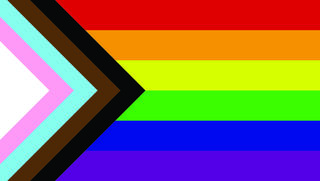Sexual Orientation
What You May Not Know About Being Trans or Nonbinary
And how you can help with those gender-diverse as a health provider.
Posted July 29, 2022 Reviewed by Vanessa Lancaster
Key points
- Misconceptions about being trans prevail: it's not a choice or pathology but a valid/natural identity that should be supported and celebrated.
- The trans population is very vulnerable, even more so in today's political climate, and we can help decrease their alarmingly high suicide rate.
- Health providers can help by being more knowledgeable about being trans and nonbinary and advocating for more justice and understanding.
- We can help by using more gender-neutral language, not assuming sexual orientation, and getting into the habit of stating our pronouns often.
I trace my commitment to serving and advocating for marginalized and underserved communities to my Jewish heritage. As a Jewish person, I am a member of a resilient minority group that experienced centuries of oppression and genocide. Despite being a cis-male with certain blind spots on this topic, this cultivated inside me a sensitivity to discrimination and a passion for social justice and allyship.
Being trans, nonbinary, and all non-cis gender diversity for that matter, is not only not pathological, but healthy and natural. Unfortunately ignorance prevails nationally and globally, especially the false but ubiquitous belief that the only legitimate genders are male and female, and it leads to widespread, unnecessary suffering.
It has become part of my civic duty to advocate for LGBTQIAA+ community (lesbian, gay, bisexual, transgender, queer, questioning, intersex, asexual, angender, and other important gender identities and sexual orientations that aren't included in the iterative and fluid acronym) so they can be better served, protected and understood.
I’m also sensitive to others’ suffering because I grew up with a speech impediment. As a child, most people didn’t understand that my stutter was involuntary; peers and even many teachers, coaches, and mentors told me to “slow down,” and “just relax and speak.” Many people didn’t understand my suffering, and I agonized in silence until I learned how to mostly overcome it with speech therapy, EMDR therapy, practice, and confidence-building work. Since overcoming it, I’ve hoped to prevent similar suffering in others in my work as a trauma and relational therapist.
A Key Source of the Issue
Most humans are cisgender, which means our assigned sex and genetic chromosomes match our gender identity. This means that if you're male, you feel like a male from the inside and express yourself outwardly as male, same with being female.
To understand and empathize with the many non-cisgender people, likely one out of ever 20 people statistically: how would you feel if the general public and most public institutions regularly imposed a gender and/or sexual orientation on you that you felt did not accurately represent who you really are?
You don’t have to have suffered like I had to make a difference for the LGBTQIAA+ community (this post focuses mostly on those with diverse gender identities), which is estimated to be 10 percent (and this only reflects those who feel safe to report, so it's probably more like 15 percent or more) of the world’s population. We all have experienced a little taste of what it feels like to be discriminated, in that everyone, at some point, has been incorrectly labeled, misunderstood, and targeted or mistreated; those marginalized to a much higher degree, however.
The trans, queer, and gender-diverse communities have been fighting an uphill battle for their lives, with their jobs, families, and interpersonal relationships constantly at risk. They endure constant mislabeling, discrimination, violence, and judgment. The most covert, perhaps, is people assuming it to be a choice when it's not. No wonder LGBTQIAA+ youth have a high suicide rate, upwards of 40 percent. This must go down; gender-diverse people deserve better, and you can make difference.

Think for yourself, especially if you're cisgender (like I defined above: when your inner and outer gender identity matches your assigned sex at birth, which is true for a majority of us): is your sense of being the gender you are a choice? Did you choose to become a man or woman, and feel like a man or woman? Likely not. Those trans and nonbinary didn't choose it either.
Here are some questions to think about in your practice if you are a health provider to challenge your assumptions and foster acceptance and healing:
- Do you assume all your patients or clients are cisgender?
- More broadly: do you assume couples are monogamous?
- Do you assume heterosexuality if someone is currently in a heterosexual relationship?
- Do you assume the client you’re talking to is heterosexual? For example, have you, knowingly or unknowingly, asked if a female client has a boyfriend instead of a “partner(s)?”
Working toward not assuming "yes" to the above questions and using supportive and neutral language can make a big difference to foster safety for those LGBTQIAA+.
Conclusion
The "he/she" gender binary so ubiquitous in our world inadvertently erases trans, nonbinary (when the person identifies and feels from the inside that masculine and feminine energy is fluid in their subjective sense of their their gender identity), and other validate, natural, and healthy gender identities. There is more variation in human gender than merely “ladies and gentlemen” or “men and women.”
Since an essential vehicle of change for health providers language, we can help by using inclusive, respectful, and empowering language. This includes using person-first language (putting the person first and their diagnosis second: examples are "a person diagnosed with schizophrenia" instead of "a schizophrenic" or "a person struggling with alcoholism" instead of "an alcoholic"), explicitly stating your own pronouns when you introduce yourself to patients even if you're cisgender (this will help those trans and nonbinary express their pronouns which are often "they/them" among others like "they/she" or "Ze"), calling out the use of terms like “mankind” ("humankind" is more inclusive; there’s even a case to call the word "history" [his-story] “her-story,” “their-story,” or "our-story”) and “he/she” and the binary bathrooms (unlike other gender-inclusive countries like Canada with primarily unisex public bathrooms).
As Dr. Martin Luther King reminded us, “our lives begin to end the day we become silent about things that matter.”




